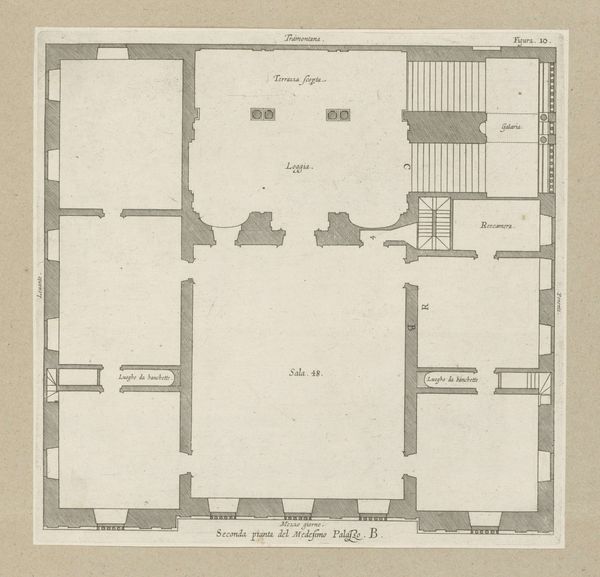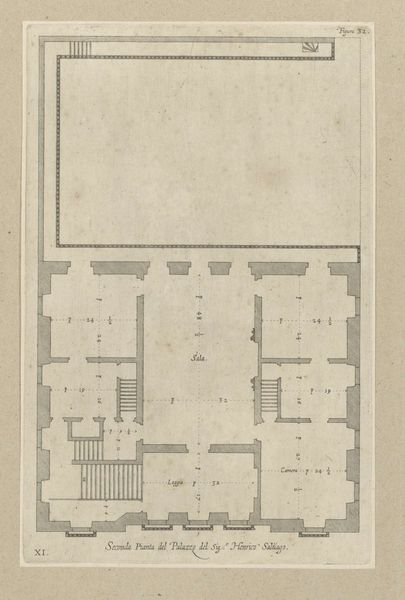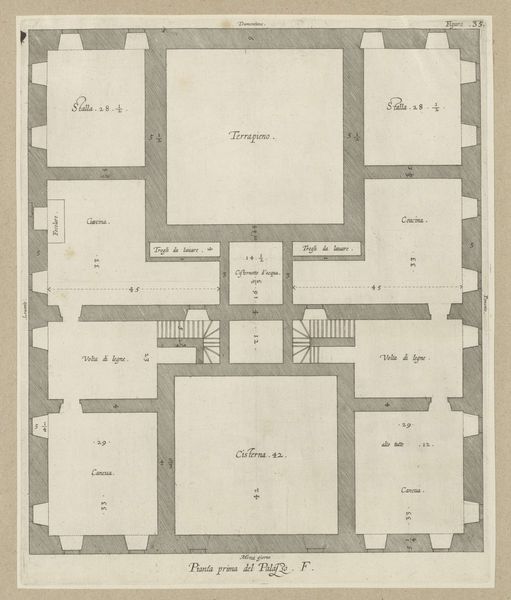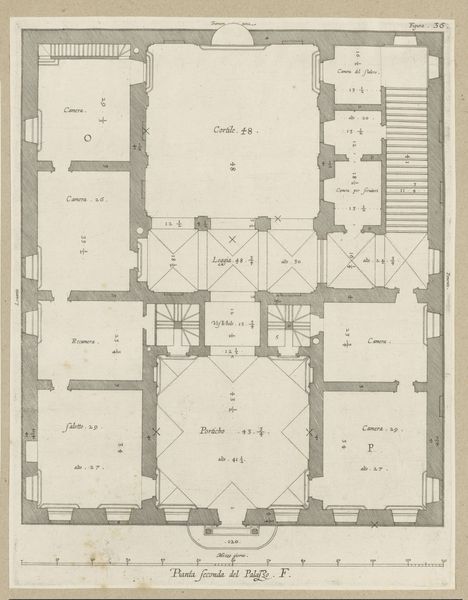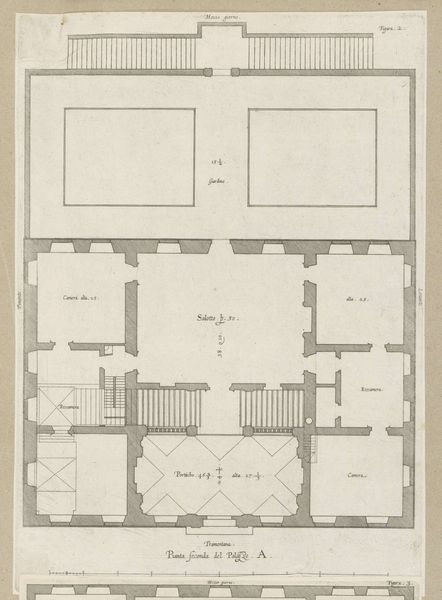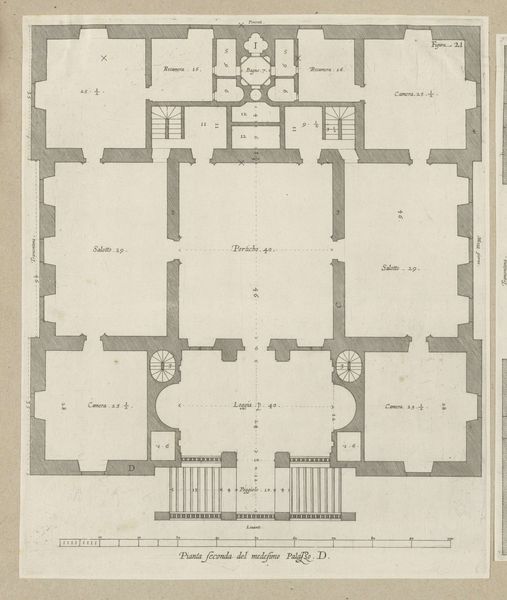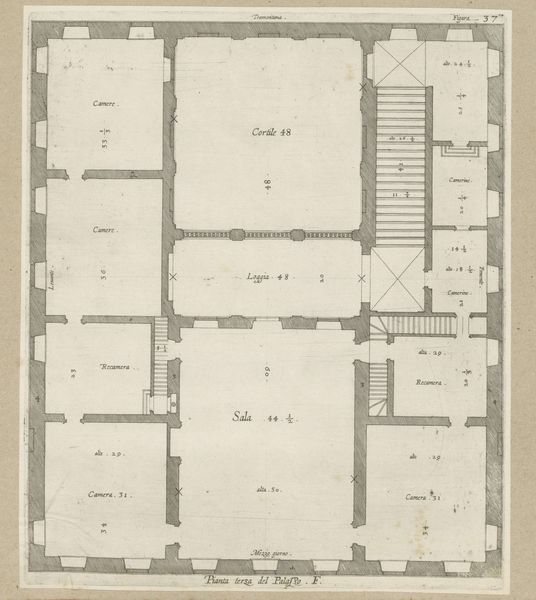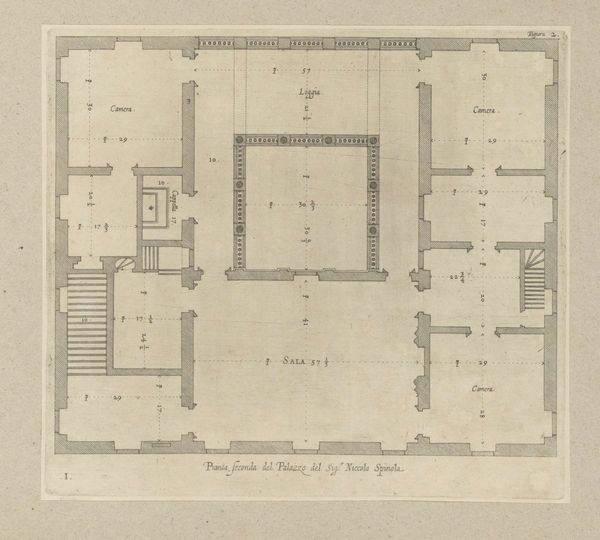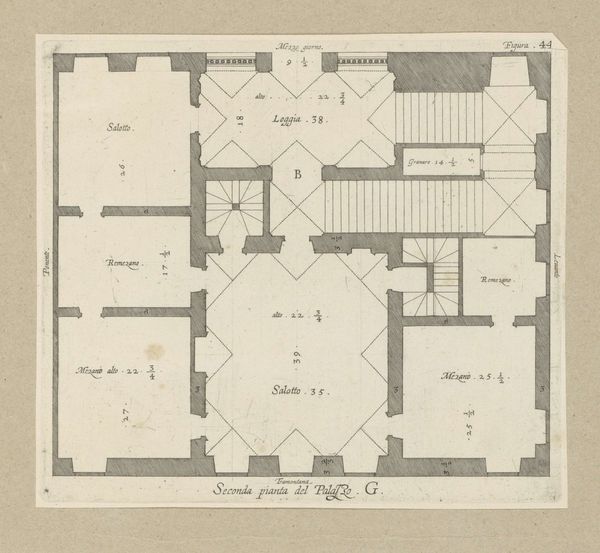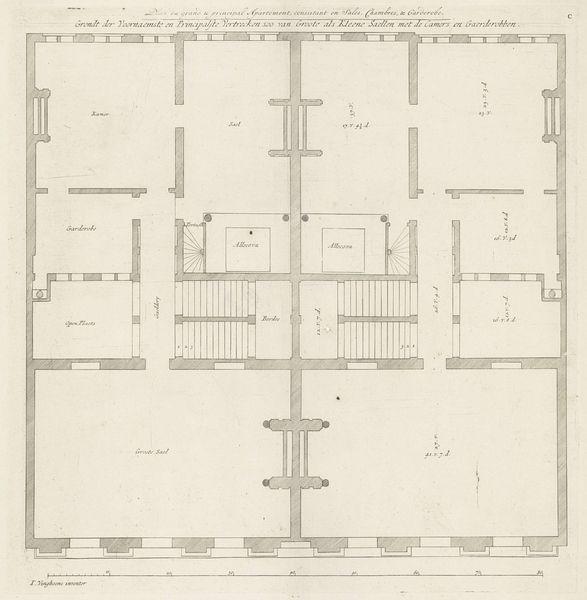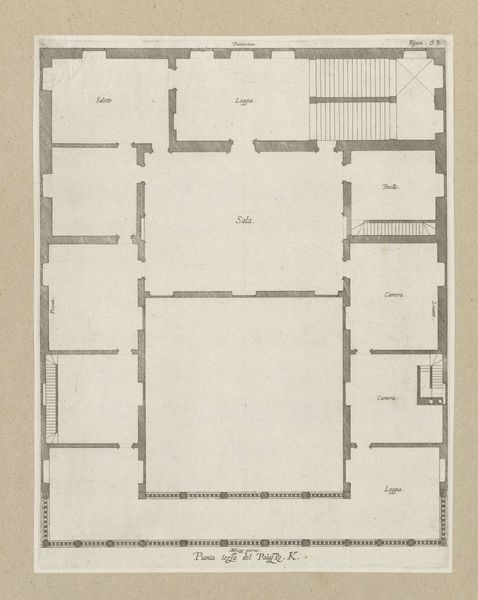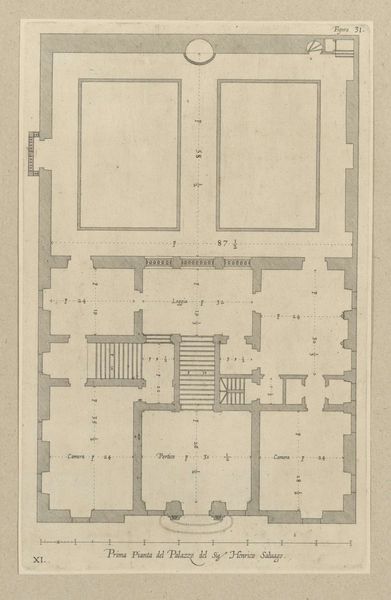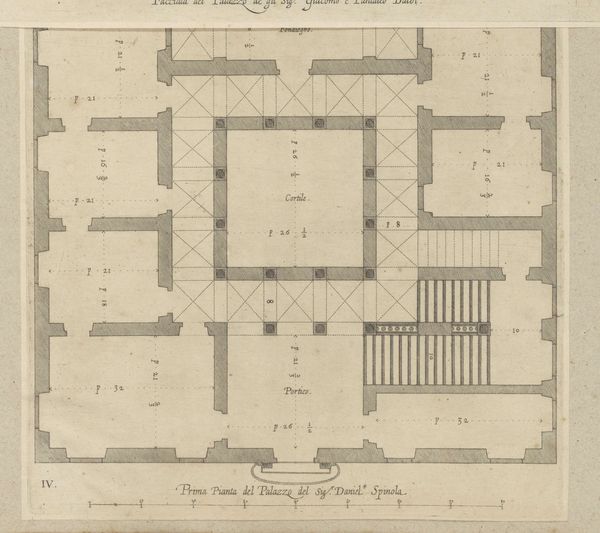
Plattegrond van de eerste verdieping van de Villa Grimaldi te Genua 1622
0:00
0:00
drawing, print, paper, ink, architecture
#
drawing
#
baroque
# print
#
paper
#
ink
#
geometric
#
cityscape
#
architecture
Dimensions: height 243 mm, width 268 mm, height 583 mm, width 435 mm
Copyright: Rijks Museum: Open Domain
Curator: What strikes me immediately about this drawing is its detached precision, its unemotional record of domestic space. There’s something clinical in the evenness of the lines. Editor: Indeed. We're looking at "Plattegrond van de eerste verdieping van de Villa Grimaldi te Genua," a print rendered in ink on paper. Nicolaes Ryckmans created it around 1622. What you perceive as clinical, I see as clarity, even a baroque impulse to categorize the domestic world through architectural mapping. Curator: Categorization becomes a form of control, doesn't it? Look at how the rooms are numbered and labelled – "Camera," "Sala," "Loggia." It's as if the Grimaldi family and their life within the Villa is being carefully cataloged and therefore controlled by the cartographer's eye. Each room possesses a coded meaning through measurement. Editor: I agree. Architectural plans always have that dual nature. It is at once technical, depicting the Villa as a constructed physical entity and offering insight into the lives within its walls during that era. Notice how the staircase seems so meticulously rendered, given its functional importance. It hints at how public or private movements could have been staged throughout this space. Curator: The staircase certainly dominates a portion of the composition. One can envision social ascension or descension literally taking place there! Furthermore, a geometric language prevails – an effort to codify domesticity within rigid forms. Consider "Camera 26" replicated identically at both the left and right sides, perhaps intended as private chambers, a sign of the rise of wealthy, individualized nuclear families. Editor: That repetition highlights the social standard these rooms had come to represent. And what's compelling is that this isn't just about the physical layout, but also about power, social status, and the domestic performance of the Grimaldi family within their grand villa in Genoa. Ryckmans delivers an artifact of early 17th century social aspirations. Curator: Thank you, I find I can see beyond what seemed initially like emotionless lines. It makes one wonder what dramas played out within these precisely rendered walls. Editor: A floor plan isn’t just about where walls stand. It becomes a stage set in its own way, reflecting and reinforcing social dynamics.
Comments
No comments
Be the first to comment and join the conversation on the ultimate creative platform.
